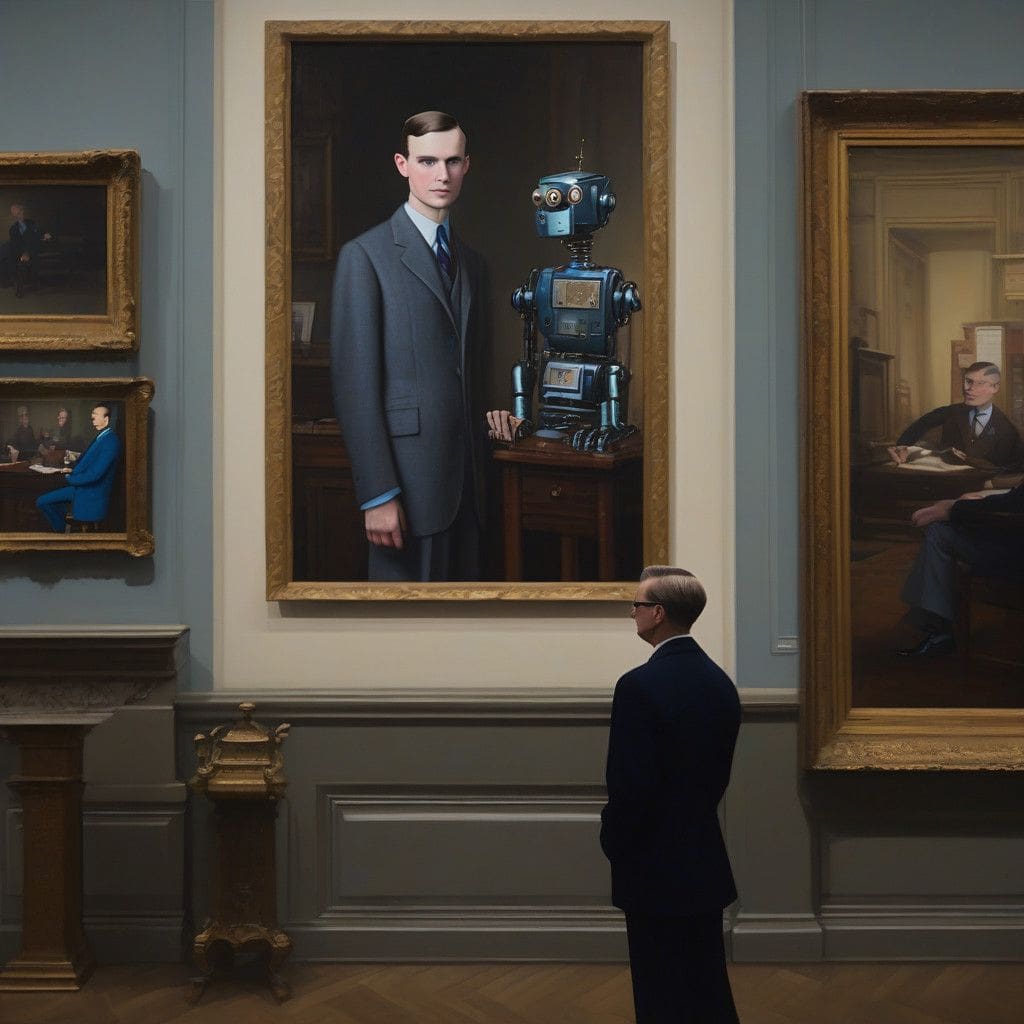In a remarkable intersection of art and technology, a portrait of the legendary mathematician Alan Turing, created by Ai-Da—a humanoid robot artist—will be auctioned at Sotheby’s London next month. This pioneering sale not only represents a significant moment in the art world but also raises profound questions about the implications of artificial intelligence in society.
Ai-Da, recognized as one of the most advanced AI-powered robot artists, is equipped with sophisticated algorithms, cameras, and bionic hands that enable her to create striking and meaningful artwork. Standing at 2.2 meters tall, the painting is titled “AI God” and presents a haunting portrayal of Turing. The artwork features muted colors and fragmented facial planes, evoking the complexities and challenges that Turing himself highlighted in relation to managing artificial intelligence. This artistic representation is particularly poignant as Turing, who played a crucial role in WWII codebreaking, has become an enduring symbol for discussions on the ethical dimensions of AI.
The auction will occur from October 31 to November 7, coinciding with a growing interest in the relationship between digital technologies and creative expression. The estimated selling price for Ai-Da’s portrait is set between £100,000 and £150,000, a testament to the advancing recognition of AI as a legitimate medium of artistic expression. Previously, Ai-Da has garnered attention for her depictions of Glastonbury Festival performers, including icons like Billie Eilish and Paul McCartney, showcasing her capability to capture contemporary cultural moments.
The creation of Ai-Da was spearheaded by Aidan Meller, who collaborated with AI experts from the Universities of Oxford and Birmingham. Meller has emphasized that Ai-Da’s works serve as a continuous dialogue about the future of AI and the urgent global race to control its burgeoning potential. The upcoming auction encapsulates this theme, as it provokes discussions about the ethical and philosophical ramifications of AI in the creative arts, a domain traditionally perceived as uniquely human.
As society increasingly integrates AI into daily life, the relevance of this auction cannot be overstated. It challenges the conventional boundaries of what constitutes art and questions the role of technology in creative processes. Will AI-generated works be accepted alongside traditional artworks? Can machines truly understand and recreate human experiences? These are critical questions that the auction may ignite among collectors, artists, and the general public.
In recent years, the art world has witnessed a significant shift towards embracing technological advancements, with multiple examples of digital art, NFTs, and AI-driven creations gaining prominence. However, Ai-Da’s portrait of Turing signifies a particularly compelling merging of cultural history with the avant-garde possibilities of modern technology. Turing’s legacy stands at the fulcrum of mathematical innovation and ethical quandaries regarding automated systems. Thus, this painting may not merely be an artistic endeavor but rather a cultural commentary on the technological trajectory humanity is navigating.
As the sale of Ai-Da’s artwork approaches, anticipation continues to build around Sotheby’s auction and the broader conversations it hopes to inspire. Collectors and enthusiasts alike are taken on a journey through time—reflecting on Turing’s groundbreaking contributions while considering the implications of the technology that Ai-Da embodies.
In conclusion, Ai-Da’s portrait of Alan Turing is more than an artwork; it is a statement about the convergence of art, technology, and ethics in the modern world. As auction day approaches, it is clear that the legacy of Alan Turing will continue to provoke thought and inspire dialogue, much as it has throughout his enduring impact on computer science and artificial intelligence.












